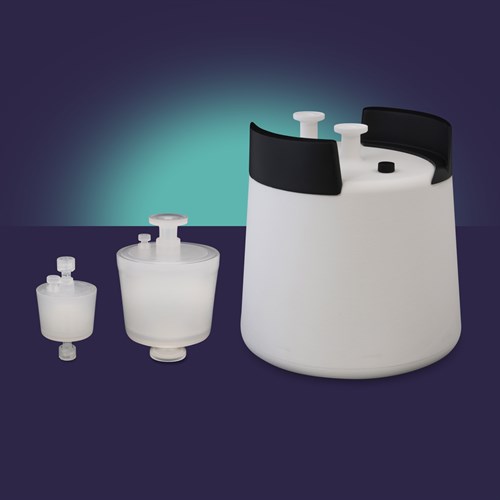Determination of Dynamic Binding Capacity for Chromatography Adsorbent
Published date: 12 December 2023
The dynamic binding capacity of a chromatography media is the amount of target protein that will bind to an amount of media under flow conditions before there is a significant breakthrough of the product. This parameter is true reflection of mass transfer limitations of the large protein molecule that takes place under increased flow rate and is more practical for predicting real process performance of the adsorbent compared to determination of static binding capacity.
Method
The dynamic binding capacity can be determined using either purified protein or preferably the starting feed stock. If pure protein is used, the breakthrough curve can be seen directly by monitoring UV absorbance.
If starting feed stock is used, the dynamic binding capacity will be affected not only by the concentration of the target protein but also the presence of other interfering molecules and the presence other UV absorbing components will mask the breakthrough of the target protein. This will require analysis of fractions using a target protein specific assay to determine the breakthrough properties.
- Pack a suitable small column to bed height of at least 10 cm with the chromatography adsorbent; Make sure column is well packed using the flow packing method (consult technical user guide for the packing method)
- Wash the column with the equilibration buffer
- Either prepare a solution of purified protein in the equilibration buffer at a concentration and pH that is similar starting feed stock or use the starting feed stock filtered through o.2 µm filter
- Bypass the column and pass the selected feed through the UV detector, to determine UV absorbance at 100% breakthrough of the sample
- Flush the chromatography system lines and bring the column back on line
- Load the column feed solution at the desired linear flow rate for the final process or the residence time (this is the time that a non-retained molecule will take to pass through the packed bed; 3 to 5 minutes is recommended for the initial screen)
- Monitor the UV absorbance of the column outlet effluent
- When using purified protein, it is possible that a very minor UV plateau may be seen due to minor impurities before the main breakthrough occurs
- When using the crude starting material, a high amount of other UV absorbing material will mask the target protein breakthrough; therefore, collect fractions during the column load and analyse the fractions for the presence of the target protein using target specific assay such as enzyme activity or ELISA; alternatively, SDS-PAGE can be used to identify fractions containing the target protein
- Once the concentration of target protein has been determined, the data can be plotted to provide the breakthrough curve
- From the breakthrough curve, the amount of target protein bound before breakthrough occurs is calculated by multiplying the concentration of the protein in the feed stock with the total volume loaded on to the column to the required breakthrough point (usually 10%) minus the void volume of the column (usually around 0.7 x the bed volume)
Breakthrough Formula
Mass bound = Co x (VL-Vo)
Where: VL = volume loaded up to the breakthrough point
Vo = void volume of the column
Co = concentration of MAb in the feedstock.
The dynamic binding capacity mg/ml of adsorbent can be calculated by dividing the mass of protein bound to the column by the volume of adsorbent in the column.


